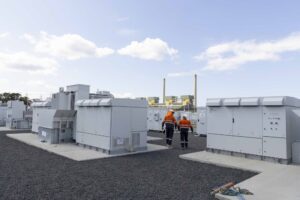The Palaszczuk government is to progress plans for a new pumped hydro energy storage facility in the south-east of Queensland, announcing funding for a two-year feasibility study into what would become one of Australia’s largest energy storage projects.
The Queensland government has committed $22 million towards the completion of a detailed feasibility study, which is expected to take up to two years to complete. It comes just two weeks after it announced a “battery blitz” immediately following the Callide coal plant explosion.
The proposed pumped hydro storage facility would be established at the Borumba Dam, around 120 kilometres north of Brisbane, placing it within the Queensland government’s planned Southern Queensland Renewable Energy Zone.
If the project proves viable, it could represent a multi-billion investment in dispatchable energy storage infrastructure that the Palaszczuk government estimates could provide backup supply for around 1.5 million households, and its construction is projected to support around 2,000 new jobs.
“More pumped hydro means more long-term, reliable energy and jobs for Queenslanders,” Queensland premier Annastacia Palaszczuk said.
“My government has been exploring potential sites for pumped hydro since 2017. Supporting investment in renewables is part of Queensland’s plan for economic recovery from the global coronavirus pandemic.
“It will deliver clean energy and support thousands of jobs into the future.”
Pumped hydro projects are able to store energy and produce electricity on demand by moving water between two different reservoirs of differing heights.
Cheap or excess electricity is used to pump water from a lower reservoir to a higher one, storing the energy as potential energy. The water is released back to the lower reservoir, under the force of gravity, passing through a generator to produce electricity when it is needed.
Queensland energy minister, Mick de Brenni, said the need for the project had become more evident following the recent failure of the Callide C power station, which has been taken offline following a dramatic and devastating explosion at the plant.
“The benefits of having pumped hydro as part of our diversified energy mix was proven last month when Callide Power Station went offline,” de Brenni said.
“Pumped hydro storage is flexible, reliable, and complements renewable energy generation such as solar and wind. That’s why Queensland needs more of it as we progress to 50 per cent renewables by 2030.”
De Brenni said that if the project ultimately proceeds, the federal government should come forward to help fund the project, in line with bilateral agreements it has struck with other states.
“We’re talking about nation building infrastructure,” de Brenni said. “Every other State has had energy projects built by the Commonwealth – Queenslanders deserve their share.”
Government-owned utility Powerlink will be tasked with undertaking the feasibility study, which will include consultation with a range of prospective stakeholders, including local community and environment groups and Traditional Owners.
The study will also cover engineering and design work, hydrological modelling, geological testing, and an assessment of the project’s potential environmental impacts..
The announcement of funding for the feasibility student into the pumped hydro project was cautiously welcomed by environment groups, which said it has the potential to help accelerate wider investment in Queensland clean energy projects.
“Big renewable storage projects like this can speed the transition away from coal and gas and help make Queensland a renewable energy superpower,” Australian Conservation Foundation CEO Kelly O’Shanassy said.
“Of course, this project must first go through proper environmental assessments to make sure it doesn’t threaten our precious and unique animals, woodlands and forests, or compromise environmental flows in the Mary River catchment.”
Queensland is host to one currently operational pumped hydro energy storage facility, located at the Wivenhoe Dam west of Brisbane. A second pumped hydro facility is currently being constructed by Genex at Kidston in northern Queensland.
De Brenni said the Borumba project would have double the generation and triple the storage of Wivenhoe, indicating the new project would likely deliver around 1,000MW of generation capacity.
Australia has just two other operating pumped hydro energy storage projects – the Tumut 3 power station that forms part of the Snowy Hydro scheme and Origin Energy’s Shoalhaven pumped hydro project in New South Wales.
See also RenewEconomy’s new pumped hydro storage map:








